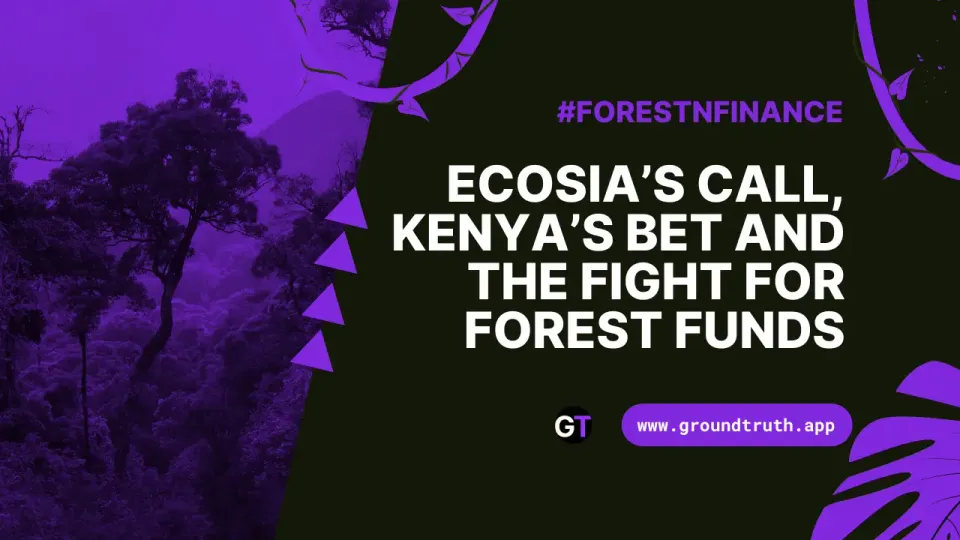Finally, Biodiversity Gets Its Own Credit 🌿
Unlike carbon credits, which focus on emissions, Nature Credits are all about concrete biodiversity improvements.

Verra, the heavyweight in sustainability certification, has just dropped its Nature Framework, and it’s set to shake up how we invest in biodiversity 🌎. Here’s the scoop: the initiative, launched under Verra’s SD VISta Program, introduces Nature Credits—basically, a new way for companies to channel money directly into preserving ecosystems. With a $200 billion annual funding gap in global biodiversity conservation, Verra’s Nature Framework provides a vital boost, connecting businesses directly to ecosystem project verification and tools for tree planting 🌱 that serve biodiversity, not just emissions.
Nature Credits: More Than a Tree-Planting Program 🌳
Unlike carbon credits, which focus on emissions, Nature Credits are all about concrete biodiversity improvements 🐾. Picture this: rather than neutralizing emissions elsewhere, companies can invest in real, on-the-ground efforts to help specific ecosystems thrive. The beauty of Nature Credits is that they are meant to measure actual biodiversity gains, meaning businesses can invest in visible, meaningful change instead of hypothetical offsets.
Skepticism Persists 🤨
Biodiversity credits are getting a serious side-eye 👀, with critics alleging they could end up as the carbon credits sequel nobody asked for. The argument? These credits might just be a flashy detour, letting companies flaunt eco-friendly badges without tackling the messy reality of biodiversity loss 🌍💸. Verra and its allies insist biodiversity credits are aiming for real, measurable improvements in specific ecosystems.
And in fact, it sounds like the new gameplan may be to rule out offsetting altogether. Case in point: 88% of surveyed suppliers told Pollination that they’re all-in on pure biodiversity credits—not offsets. And in a recent power move, IAPB ruled out an international offset market altogether, pushing instead for tightly regulated, local-to-local offsets with policy muscle behind it 💪, as shared by Simon Zadek, co-chief of NatureFinance.
Yet doubts remain: with many critics fearing these credits risk superficial or ineffective implementation. And there's another twist—they worry the financial spoils could bypass Indigenous communities, echoing past inequities in carbon markets. Luckily Verra’s Nature Framework attempts to fix this by centering community consent and benefit-sharing.
Local Communities in the Driver’s Seat 🚗
The Nature Framework puts Indigenous Peoples and local communities—those who actually live in and know these ecosystems—at the center of each project. Verra’s strict standards ensure projects secure free, prior, and informed consent (FPIC) and establish real benefit-sharing with local populations. This isn’t just about boosting biodiversity; it’s about making sure the right people benefit from it, too 🫱🫲.
Meeting Global Biodiversity Targets, with Style 🎯
Verra’s framework isn’t just saving the planet; it’s helping meet the Kunming-Montreal Global Biodiversity Framework’s Target 19, which calls for ramping up resources to tackle biodiversity loss 🌍. For companies, Nature Credits offer a chance to go beyond checking the “sustainability” box. It’s about actively supporting the ecosystems they rely on, with a little eco-street cred to boot.
What’s Next? 🚀
With a full launch set for April 2025, Verra is using pilot projects to iron out the details, gathering data to define biodiversity baselines and set the bar high. An expert panel will weigh in to ensure these credits actually mean something.
Ultimately, if we’re serious about reversing biodiversity loss, we have to give market-based solutions like Nature Credits a fair shot. Sure, the concept has its critics, but as long as these frameworks stay transparent and put real impact above flashy greenwashing, they just might make a difference. Here's hoping they succeed—because the planet could use all the help it can get.
In a crowded field of sustainability initiatives, Verra’s Nature Framework is a bold new way for businesses to truly back biodiversity. This isn’t just feel-good green stuff—it’s measurable, impactful, and actually gets results 🌱.
Sources 📖
Moss, Brad. (2024, October 31). Are biodiversity credits doomed to repeat the voluntary carbon market’s flaws? Natura Hoy. Retrieved from https://www.naturahoy.com/2024/10/are-biodiversity-credits-doomed-to-repeat-the-voluntary-carbon-markets-flaws/
Verra launches the Nature Framework to advance credible and ambitious nature-based climate action. (2023, September 27). Verra. Retrieved from https://verra.org/verra-launches-nature-framework/
Waterford, L., & Hutchinson, J. (2024, October 1). Integrity at the forefront as biodiversity credit markets grow. Pollination. Retrieved from https://pollinationgroup.com/media_post/integrity-at-the-forefront-as-biodiversity-credit-markets-grow/




